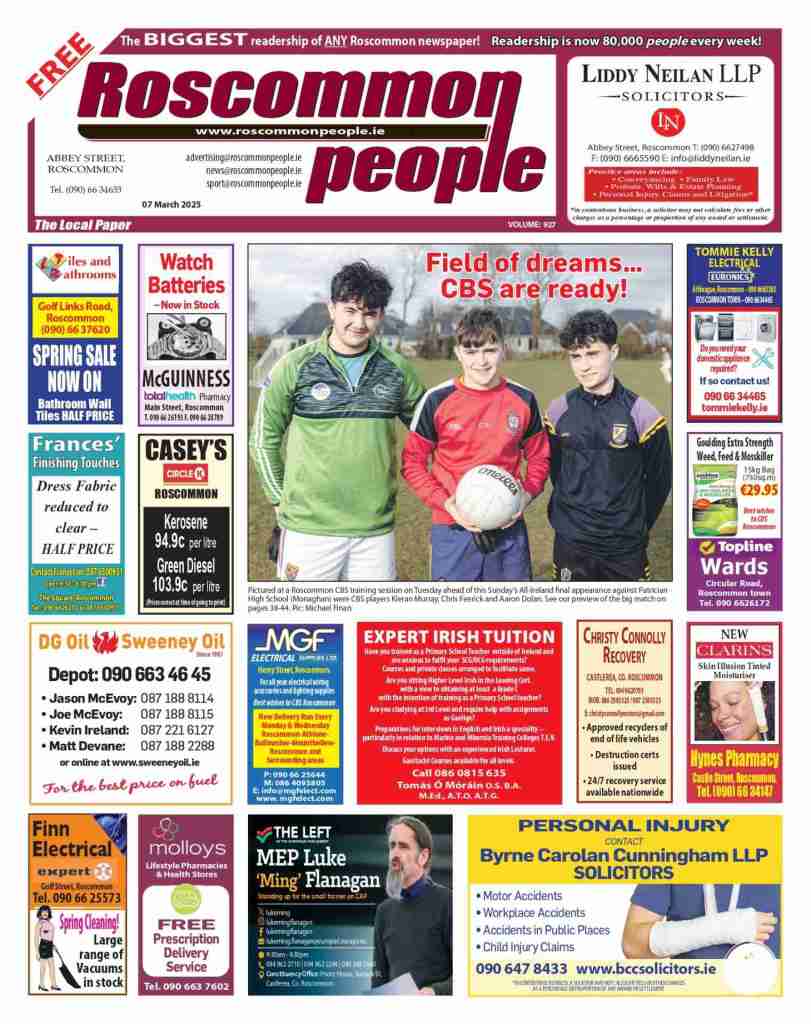Being involved in an unhealthy relationship can take a very serious toll on a young person’s physical and mental health, on their wellbeing, and on their education. In fact, it’s my personal belief that when it comes to abusive relationships, and the trauma they cause to our lives, teens and young people rarely get mentioned in the overall discussion. Would I be right?
We all want what’s best for our kids, especially when it comes to them going on that first date, experiencing that first kiss, and falling in love for the very first time.
I may come across as overly protective, but, when they were teenagers, if my girls told me they had a new boyfriend, I made it my business to, ahem, have a little conversation with the young man. Why? Because one, I wanted to ascertain what type of person this new boyfriend was, and two, I wanted to make sure he understood exactly what type of mammy I am, as in, he’d be one hundred per cent clear how I expected him to treat my child…or else!
Fast-forward to today, and I’m delighted to say I have the best sons-in-law in Ireland; not only do they treat my girls like princesses, (and rightly so), they also treat me, d’mammy-in-law, like a queen.
We’re a lucky family; but what happens when your child’s not so lucky? What happens when your daughter falls into the 51 per cent of young women under the age of 18 who experience abuse? What happens when they’re being coercively controlled by this overly-attentive, constantly messaging, excessively demanding, handsome new lad to such an extent, you fear you’re not just losing her, but she’s also losing her own sense of self?
It’s not my intention to place a ‘downer’ on St Valentine’s Day; but, as the rise in relationship abuse was brought into sharp focus during the pandemic years, I’d like to use this occasion to highlight, for teenagers, the difference between a healthy, happy relationship and an abusive one.
While young people may normally associate domestic abuse/violence with images of a poor mother trying desperately hard to cover up black eyes or bruised arms on the school run, it’s my belief that teenagers in the throes of first love, are sadly, albeit innocently, overlooking their own needs.
With that in mind, (and while I’m no expert, just a concerned mammy who’s had to, er, ‘see off’ an unsuitable boyfriend or two in my time), I’d like to place some perspective on what I believe to be the clear warning signs to look out for.
A feeling of unease/being unsettled: You may not be able to put your finger on it, and it may not even be one single thing, but something’s not quite right. You’re feeling controlled, manipulated, you feel your sense of self is being undermined by this person you love and who insists they love you. You imagine you’re going crazy because hey, they’ve never hit you: yet you feel unsafe…strange even. They’re always criticising how you look, how you do your hair, and how you dress. You’ve seen them flip through your phone to see who you’ve been talking to/messaging. You seem to be constantly walking on eggshells and finding yourself apologising to them a lot. They’re bombarding you with messages, and you panic because you can’t reply because you’re in class; but you have to get back, because they get angry when you don’t respond immediately. They’re criticising your friends, (your support mechanism); accusing you of spending too much time with them. You told them it’s time to take a break, but they’ve threatened to harm themselves.
At this stage, can I point out to any parent whose teenager is experiencing intimate relationship abuse (and to the teen themselves), that the law is on your side. Under the Domestic Violence Act 2018, parents can help teens to apply for a Safety Order. For more information, log onto www.citizensinformation.ie, write ‘safety order’ in the search bar and all of the relevant categories and information pops up.
Women’s Aid’s #TooIntoYou campaign running from February 14th to March 8th, provides a guide for young people wishing to obtain a safety order. Log onto www.toointoyou.ie where parents and teens can not only find more ‘red flag’ signs, but teens can also take a quiz to help them understand whether or not their relationship is healthy.
If you’re a teenager/parent who wishes to chat with someone, you can click on the site’s ‘chat now’ button for instant, private and confidential support.
The Women’s Aid 24-hour national freephone helpline is 1800 341 900. In an emergency, please dial 999.
Why I believe we should all learn to sing Amhrán na bhFiann
This year marks the centenary of our country’s national anthem Amhrán na bhFiann – A Soldier’s Song – being published as Gaeilge.
As a proud Irish woman, it’s my belief that our national anthem, written circa 1909-1910 (some reference it as being written in 1907), as a rebel song by Peader Kearney and Patrick Heeney, forms a hugely important part of our Irish culture. However, as the lads originally composed it as Béarla, it’s Liam Ó Rinn’s 1916 translation, published as Gaeilge in 1923, that we’re celebrating and honouring this year.
On foot of this, a ‘Learn our Anthem’ campaign has been launched by Abair Linn Publishing, the GAA and Schoolbooks.ie in a bid to encourage primary school children to grasp and absorb our nation’s anthem in time for St Patrick’s Day. Maith sibh gach duine.
I’m someone who believes that every time Amhrán na bhFiann is played, especially when in the presence of our tricolour, all in attendance should not only stand to attention, but should also face our national flag, saluting it until the very last note of the music, as protocol dictates.
Yep, you’ve guessed it, I love our national anthem, and not just the chorus we use as our ‘official’ version, but all three verses; and I totally disagree with those who slam it as being ‘violent’, ‘sexist’, and ‘no longer fit for purpose’! The cheek!
I actually get annoyed whenever I hear my fellow countrymen and women mumbling through the words of Amhrán na bhFiann; clumsily shouting it out ‘freestyle’! I’m glad that at last, everyone is being encouraged to familiarise themselves with this important song which not only forms a major part of our history, our traditions, and our national identity, but also reflects upon our struggles to maintain them.
Liam’s right, McGregor does give Ireland a bad name!
Ya gotta love Oscar winner Liam Neeson’s take on Conor McGregor! Well, I do, because, even though I’m a proud Dub, I’m not a fan of the trash-talking, motor-mouth MMA brawler!
Apparently, action hero and, in my opinion the world’s second sexiest man (apologies to d’hubby, but Michael Collins always did, and always will, get my ‘sexiest man’ vote), Liam, when chatting with Men’s Health, launched into a surprising mini-rant branding McGregor ‘a little leprechaun’, whom he claims ‘gives Ireland a bad name’.
McGregor, who describes himself as someone who ’breaks people’s faces for money and bounce’, (classy), has been raising the ire of quite a few high profiles individuals lately. Comedian/broadcaster PJ Gallagher and former footie player Paul McGrath both spring to mind.
However, if this mini-feud between Liam and the ‘little leprechaun’ ever does come to blows, my money’s firmly on the super-sexy, 70-year-old Taken star who’ll no doubt give that 34-year-old windbag a taste of his ‘particular set of skills’. Skills Liam’s ‘acquired over a very long career’. Skills that make him ‘a nightmare’ for people like McGregor!’ Oooh me nerves.. g’wan ya good thing Liam!




